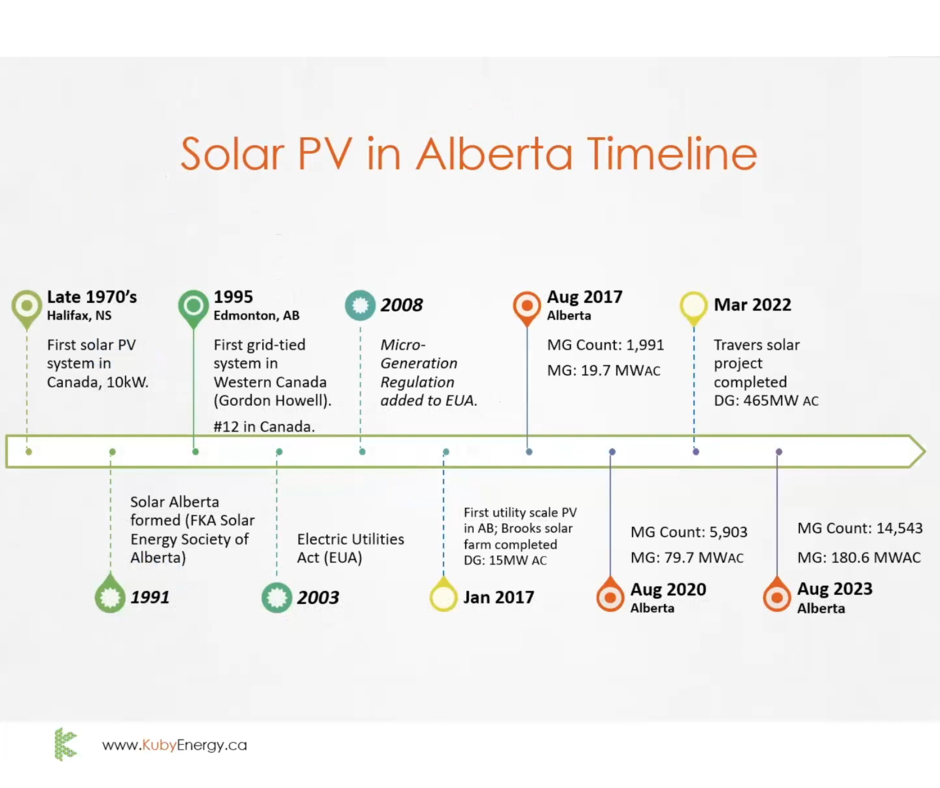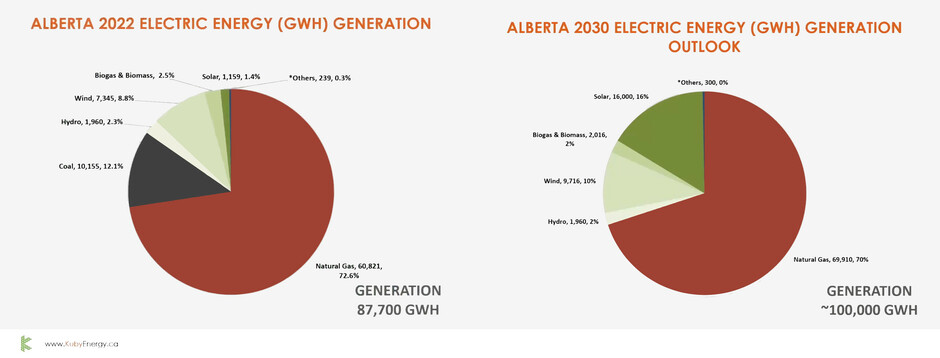Solar Alberta’s the history of solar energy: Past, present and our uncertain future
Renewable energy in Alberta has been a hot issue in the news, particularly following the Government’s announcement in August of a 7 month moratorium on the development of renewable energy.
The government stated that the moratorium intends to address concerns about land use from municipalities and land owners. The backgrounder about the AUC pause and inquiry can be read here.
In response to the announcement, Solar Alberta’s free webinar last month highlighted Alberta’s extraordinary growth and success in the solar energy sector and the province’s potential as an industry leader within Canada.
The webinar, hosted by Solar Alberta’s Executive Director Heather MacKenzie, featured two guest speakers: Adam Yereniuk, COO and co-founder of Kuby Energy; and Jim Sandercock, Chair of Alternative Energy Technologies at NAIT AND Solar Alberta Board Member.
Yereniuk and Sandercock drew on their expertise in the field to detail the growth and innovation in Alberta’s solar industry as well provide their own projections for the future of solar in Alberta.

Alberta’s solar industry owes its growth to the passion and hard work of pioneers like Gordon Howell who made history as the first to feed solar energy into Alberta’s grid by installing a PV system on his roof in 1995.
Alberta’s solar industry owes its growth to the passion and hard work of pioneers like Gordon Howell who made history as the first to feed solar energy into Alberta’s grid by installing a PV system on his roof in 1995.
At the time, solar was not regarded as an obvious clean energy solution. Sandercock attributed Solar in Alberta's success to the passion and drive of local industry leaders, smart policies and small programs, the adaptation of business models, and the decreased cost of solar globally.
Following Howell’s PV system installation, a program called EQuilibrium started work on net zero housing. In 2007, the Riverdale NZE duplex was built. The duplex utilized passive heating, solar thermal and solar PV. You can read more about the project here.
Programs like EcoSolar Home Tours, the Alberta Solar Municipal showcase and Climate Change and clean technology projects funded by Emissions Management helped increase acceptance for solar in following years. Solar training programs and an unprecedented, dramatic decrease in solar global module costs allowed for significant growth in the solar sector.
In 2017, utility scale solar saw significant growth with the first utility scale farm in Brooks Alberta being built. The farm nearly doubled the amount of solar in Alberta.
For microgeneration, the 2017 to 2019 Alberta Residential and Commercial Solar Program (RCSP) and the ongoing Canada Greener Homes Grant and Loan program were responsible for spikes in solar development in more recent years.
While Ontario has the highest energy storage capacity in Canada, Alberta led Canada’s energy storage capacity growth in 2022, accounting for 75% of the country’s growth.

While solar only accounts for 1.4% of Alberta’s electric energy generation, projected growth could put it at 16% by 2030 with the potential to surpass wind.
However, this projected growth could be negatively impacted by the moratorium. The number of solar projects in the Alberta connection queue has dropped.
“Investor confidence has been shaken,” says MacKenzie “Some folks are pulling their money and projects from the province.”
The more than $33 million dollars worth of projects on pause has investors considering other investment opportunities.
“[The moratorium] is overall a very unfortunate policy” says Yareniuk “Something that’s anti-business and anti investment in the province.”
Sandercock and Yereniuk suggest other ways to increase solar growth include removing the cap on generation for residential systems and streamlining permitting in municipalities.
“We have a really significant carbon problem globally, so what we definitely want to do is move faster,” says Sandercock.The full webinar is available on Solar Alberta’s YouTube channel.
A big thank you to Solar Alberta, Adam Yereniuk and Jim Sandercock for the presentation and for allowing us to cover your event.


